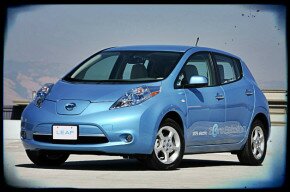Toyota is considering high-performanse GT86 hybrid
 |
Toyota presented its FT-86 Open Concept at 2013 Geneva Motor Show, a car created to test the convertible version of Toyota GT86 sports coupe. The automaker has even more plans and it is consindering high-performance petrol-electric hybrid version of GT86.
According to chief engineer Tetsuya Tada, all routes remain open to conjuring more performance from the rear-driven two-seater, with an eye on the creation of a faster and more focussed version of the acclaimed rear-drive coupe to be released later in the car’s lifecycle.
“I’ve been asked a lot about a turbocharging,” Tada said. “We are already working on a mid-life facelift for the car, and we are investigating both turbocharging and supercharging too,” he added. “But an electric motor assistance solution is also possible, and would bring benefits that forced induction does not.”
Toyota took the wraps off a conceptual convertible version of the GT86 at the 2013 Geneva Motor Show, which is almost certain to make production. It nearly didn’t, however. “The management considered the GT86 very risky,” Tada said. “They wanted proof that the ’86 coupe would hit its sales targets before they would sign off on a convertible.”
“Now that they have that proof, we can begin to think about other development ideas for the car. But we must guard against compromising any of the key virtues of the standard GT86 in the pursuit of more power.”
An electric motor assist solution, Tada suggested, could provide a substantial low-rpm torque boost for the naturally aspirated engine without affecting throttle response or compromising on fuel economy or emissions.
In attempting to keep weight – and, presumably, costs – down, Tada mentions the use of a system closer to what Honda uses for its Integrated Motor Assist rather than a full Hybrid Synergy Drive system used in current Toyota hybrids. Tada says the added weight of the system could be offset by weight reduction, while aerodynamic changes and a lower center of gravity could improve the car’s handling.
“Our TRD tuning department has found it easy to take 100kg out of the kerbweight, and have developed certain underbody fins and plates that can be employed to alter the dynamic balance of the car, to increase or reduce oversteer at medium and high speeds. They have quite a pronounced effect,” he said.
No word yet on whether a mild hybrid system would find its way to North America’s Scion FR-S – let alone its Subaru BRZ twin – but the thought is certainly an intriguing one.












